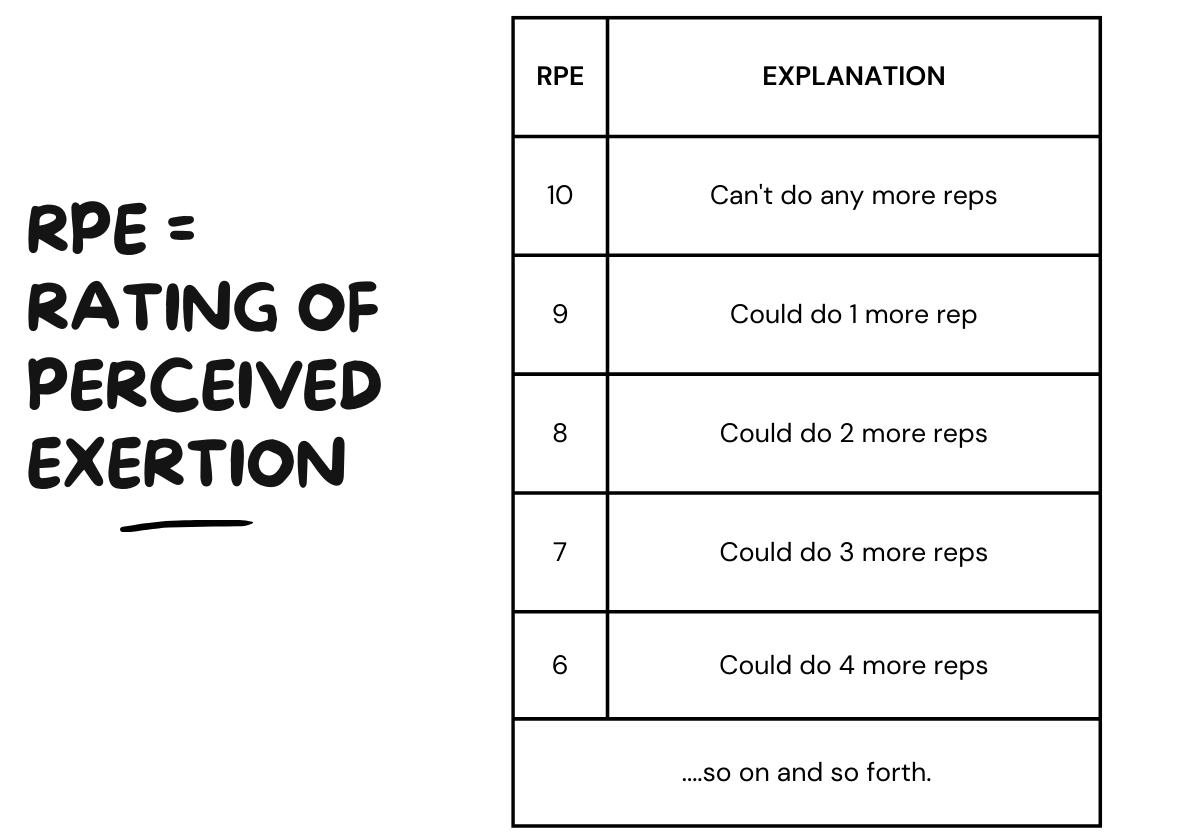How to pick your weight
We’ve written this section both in simple terms, and geeked out with a more detailed version. We suggest you read both!
In simple terms
Pick a weight that makes the prescribed reps of a given exercise challenging but doable in good form.
Increase the weight if the reps performed are too easy.
Decrease the weight if the reps performed are too hard and executed in poor form.
In Phases 1 and 2, our primary focus is on mastering technique. This means the weight should be relatively light.
In Phases 3 and above, we start to lift heavier, so pick a weight that challenges you while maintaining good form.
Anastasia is in Phase 1 and needs to pick the dumbbell weight for her first-ever Goblet Squat. As she is new to strength training and has never performed a squat variation before, she selects a low weight – 4kg. She finds the weight easy, but realises her form needs work. Because of this, she sticks to this weight so she can master her technique first, before selecting a heavier weight.
Several weeks have passed and Anastasia is now in Phase 3. She has learnt how to perform the Goblet Squat properly and has gradually increased her dumbbell weight. Currently, she can lift 12kg for 8 reps, for 3 sets.
Anastasia has reached the point where she’s been lifting 12kg comfortably for 2 weeks. All 3 sets are relatively easy and she feels she can hit another two or three extra reps in her last set.
As she’s comfortable, she decides to increase the weight to the next heavier dumbbell, which is 14kg at her gym. She finds the 8 reps of the last set doable with good form, but she’s spent after the set. Because of this, she decides to stick to this weight until it becomes easier.
Anastasia is now at the end of Phase 3. She’s increased her squat weight week-on-week and has now reached 20kg. In the last week of this phase, she gets a little too cocky and decides to jump from 20kg to 26kg.
She performs the first set and realises she can only perform 6 reps in good form; during the last 2 reps, her knees start to cave in. She realises the weight is too much of an increase and reduces it to 22kg. Her second set at 22kg is completed in good form while physically challenging properly.
The geeks version
We use the RPE scale to determine what weight to pick. RPE or the “rating of perceived exertion” refers to the difficulty level experienced during a set on a scale of 1-10.
For example, if you completed an exercise at an RPE of 10, it means you used your full power and didn’t have any further energy for another repetition. An RPE of 9 indicates that one additional repetition could have been completed, while an RPE of 8 means that two more repetitions could have been performed, and so on.
Throughout our program, we have set an RPE target for you to hit for each exercise. The RPE changes depending on the intensity of the given day.
For example, if your target RPE is 9, and you're doing a DB Bench Press for eight reps, you need to pick the weight that allows you to hit the number of reps in good form while meeting the difficulty set by the RPE.
If the set was completed and you felt the target RPE wasn't reached, increase the weight until you achieve the target RPE. If you can't complete the reps at the target RPE, decrease the weight.

